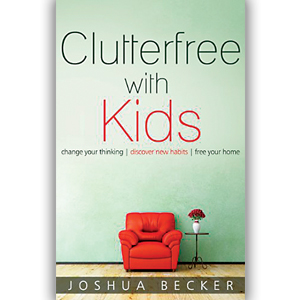Help! My Kid is Driving Me Crazy – Tools of Power
Are you tired of your kid manipulating you and others in order to get what he wants? Then, check out author David Swanson’s formulas for how parents can effectively respond to such tactics.
Here’s the next six “tools of power” he identifies:
7. Steamrol ling – “Can I? Can I? Can I?…How about now?”
In this case, Swanson is referring to the most common of all the Tools of Power, when your child incessantly badgers you to get what she wants. “The pleading persists, and it seems that your child doesn’t hear or understand the word ‘no.’ But the reality is that she not only understands the word ‘no’ but knows how to turn it into ‘yes.’” The countermeasures are simple, according to Swanson – don’t give in and find a way to make your child’s Steamrolling work against him.
8. Covert Operations – “Face it – being a kid means you sometimes lie, deceive, withhold.”
This strategy includes lying, stealing, deception, and withholding information. Swanson explains, “Although Covert Operations may seem underhanded, sneaky, and corrupt, children who use this Tool of Power do so impulsively or because, in the moment, it seems like the best way to get their needs met.” The best defense – curb your emotions and think of a restorative action. “It’s not unlike a husband bringing his wife flowers after speaking harshly to her earlier in the day…it lets your child know that no matter how badly he may have behaved, he can work to repair it.”
9. Divide and Conquer – “But Dad said…”
Children often try to exploit weaknesses in their parents’ relationship, whether it’s taking advantage of poor communication or using a difference of opinion to his advantage. Since it’s hard to discuss everything little thing in advance, Swanson suggests you generate a list of topics you both want a say in and then agree to consult each other before deciding such things.
10. Tactical Engagement – “If I can keep them talking about it, maybe they’ll give in.”
Swanson explains “while Steamrolling happens during the child’s plea, Tactical Engagement occurs after you have given your ‘final’ answer.” Once you’ve made your decision, refuse to discuss it anymore. Swanson claims it’s the only way to avoid “a war waged between youthful desires and good parenting.”
11. Creating Leverage – “I did everything you said today, so I should be able to…”
While your child is attempting to get what he wants by reminding you of her good deeds, Swanson says, it’s important to remember your priority – your child’s best interests, not his happiness. “You are the one to decide how and when to reward your child for his good deeds.”
12. Playing the Victim – “I’m the only one in the house who never gets to.”
It doesn’t matter whether your child tries to make you feel sorry for her by conveying sadness, frustration, or anger, Swanson argues, you must remember it’s all in an attempt to persuade you to give her what she wants. “Seeing your child in pain may be one of the most difficult things you will face. Nevertheless, it is imperative that you, the parent, muster the strength to refrain from giving in to your child when you know it is not the right thing to do, no matter how bad you feel for her.”
Basically, since your child is emotionally invested in getting her way, Swanson suggests you “use caution before blindly accepting assertions or actions regarding the way she feels.”
Up next week…Forging the Friendship, Character Comparison, Casting Doubt, Glorification, and Surprise Attack.
Follow Befriending Forty at http://befriendingforty.blogspot.com and find out what happens when the person I thought I’d be meets the person I actually became.
Don’t forget to like Parenting by the Book on Facebook for updates on blog posts.






